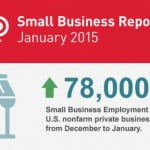
numerous economists have argued that income inequality reduces entrepreneurial pastime. whilst a largepart of a state’s populace is negative, they argue, would-be organisation founders can not benefit get admission to to the capital that they want to start businesses. As a end result, enterprise owners tend to make up a smaller fraction of the populace than in other countries.
recently, professors Roxana Gutiérrez Romero and Luciana Méndez Errico of the department of appliedEconomics at the Universidad Autónoma de Barcelona have argued that this impact is long lasting. In a brand new running paper, Gutiérrez Romero and Méndez Errico discover that international locations withhigher ranges of profits inequality within the early 19th century have decrease degrees of businessownership these days.
evaluating historic data on profits inequality in 1820 with facts on ranges of entrepreneurship in 48international locations among 2001 and 2008 accrued from the worldwide Entrepreneurship monitor(GEM) – a consultant survey of entrepreneurial interest of the grownup-age populace conducted yearlyin numerous countries – the authors discover that a one percent increase in the nineteenth Centurywealthy-to-poor ratio reduces the fraction of the populace engaged in entrepreneurial activity within thetwenty first Century by means of among one-tenth and two-tenths percentage.
The authors give an explanation for the correlation as follows: international locations with excessivedegrees of earnings inequality centuries in the past had fewer people with get admission to to the capitalneeded to begin businesses. those liquidity constraints intended that fewer humans began corporationsin these countries than in others. This sample, in turn, supposed less wealth being bequeathed to kids, trapping the nations on a low-enterprise–advent development direction.
while i’m intrigued with the aid of the authors’ evidence of a statistical affiliation between 19th Centuryprofits inequality and contemporary day entrepreneurship ranges, i’m now not certain I buy theirexplanation for it.
For the authors’ tale to be right, countries with better income inequality inside the 19th century need tohave had less enterprise formation lower back then. alas, the running paper doesn’t show evidence of abad correlation between 19th century profits inequality and nineteenth century rates of commercial enterprise formation. moreover, the data the authors gift seems inconsistent with the sort of correlation. Their paper suggests that earning inside the uk have been much much less equal than incomes in theu.s.a., the Netherlands, Switzerland, Sweden, or Japan. but, it appears not going that the UK had many fewer marketers than these other nations in 1820.
more importantly, the impact of profits inequality on entrepreneurship need to be self-correcting. countrieswith much less same earning within the nineteenth century ought to have had lower rates of entrepreneurship returned then, the authors argue, because “high tiers of inequality save you people fromtaking on commercial enterprise.”
however entrepreneurship results in greater earnings inequality because the profits of human beings incommercial enterprise for themselves tend to be greater varied than the incomes of people hired by using others. consequently, nations with extra profits equality and entrepreneurship in the 1820s musthave had much less earnings equality and entrepreneurship in subsequent years. As a end result,countries with greater equal earning inside the 19th Century ought to have much less, not extra, entrepreneurship nowadays.
I trust that a one of a kind rationalization higher fits the poor correlation among nineteenth centurylevels of income inequality and rates of entrepreneurship these days. nations with more income equality in 1820 tended to be more reliant on small scale agriculture than international locations with much lessearnings equality. The presence of small farms led to the development of a robust small enterprisesubculture in those international locations. countries that evolved a sturdy small business orientation have tended to have a larger fraction in their populations interested by going into commercial enterprisefor themselves. That, in turn, has led to constantly higher prices of entrepreneurship today.




